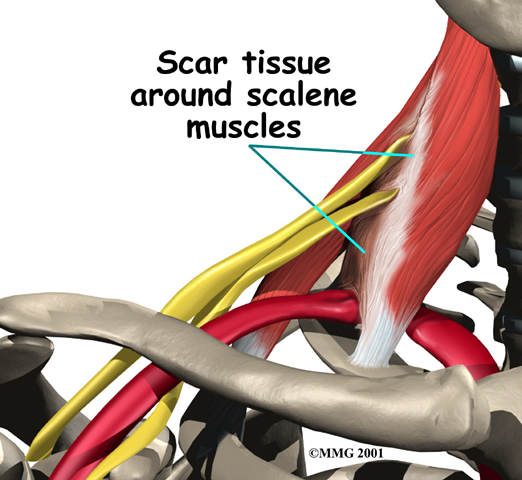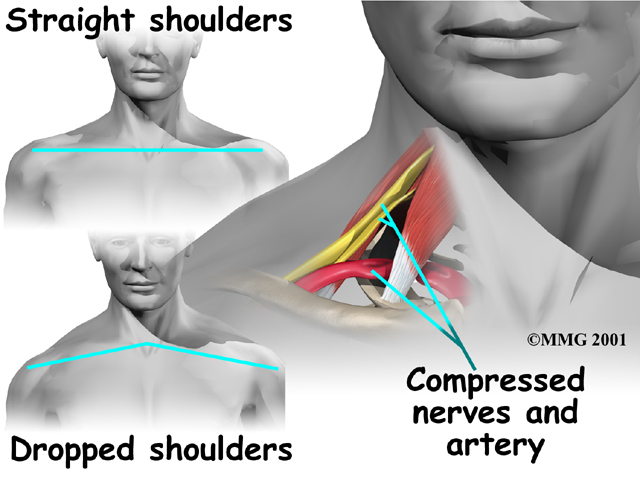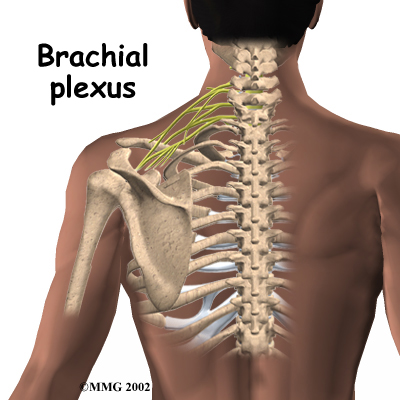Non-surgical Rehabilitation
It is best to begin treating your pain conservatively, without surgery or other invasive procedures. When you begin your Emerald Hills Physio & Sports Clinic rehabilitation program, our physiotherapist may recommend some simple ways to help you combat TOS. For example, decrease the tension of the shoulder strap of your seat belt. Take rest periods to avoid fatigue.
Overweight patients should seek help with weight loss, and women with especially large breasts may benefit from using a strapless long-line bra. Avoid heavy lifting, pulling, or pushing. Rapid breathing and stress can worsen symptoms. Avoid looking up, bending the neck back, or holding your arms up for long periods of time. And don't carry a purse or bag on the affected shoulder.
Your physiotherapist at Emerald Hills Physio & Sports Clinic may start you on some basic exercises that you can do at home. A home exercise program is essential to the treatment of TOS. This is true even if the cause of your TOS is an abnormality in the bones and muscles. You must consistently do your exercises to get the most benefit.
Our exercise program may begin with a few exercises to loosen up tight muscles and joints around the compressed nerves and blood vessels. To help restore normal mobility, our physiotherapist may prescribe stretching for the joints, muscles, and nerves. We can also help you find ways to manage your pain and avoid future problems.
You will also be given exercises to strengthen the muscles of your shoulder and upper back and to stretch the muscles in the front of the chest and shoulders. Our exercise program will focus on helping you sit and stand with good posture. Good posture is critical to managing TOS symptoms. Swimming can help some patients, but the backstroke and full breaststroke may worsen the condition.
Our physiotherapist can also give you tips to help avoid TOS pain. For example, you should limit the length of time the arms are used in outstretched or overhead positions, and don't do heavy carrying and lifting. Simple things like taking frequent breaks, changing positions, stretching, or using a hand truck or cart can bring relief. Our physiotherapist can help you with any specific tasks that cause you pain.
In most cases physiotherapy can be very effective. However, physiotherapy may not help much if your symptoms are so severe that the muscles of the hand or forearm have atrophied (shrunk).
Post-surgical Rehabilitation
Your rehabilitation will likely be more complex after surgery. Patients wear a sling after surgery to support the shoulder and arm. Passive movements can begin soon after surgery. But there should be no active motion for about two weeks, to allow the soft tissues time to heal.
Our TOS patients usually start doing resistive exercise and activities after three to four weeks. These treatments help improve motion in the shoulder blade and arm. Posture and strengthening exercises help prevent future TOS problems.
Our physiotherapist will give special attention to the type of work you do, and may have suggestions to help you avoid work postures and activities that could cause problems. We’ll show you strategies to take care of any future symptoms and avoid further problems.
When your recovery is well under way, regular visits to Emerald Hills Physio & Sports Clinic will end. Although we will continue to be a resource, you will eventually be in charge of doing your exercises as part of an ongoing home program.
Emerald Hills Physio & Sports Clinic provides services for physiotherapy in Sherwood Park.
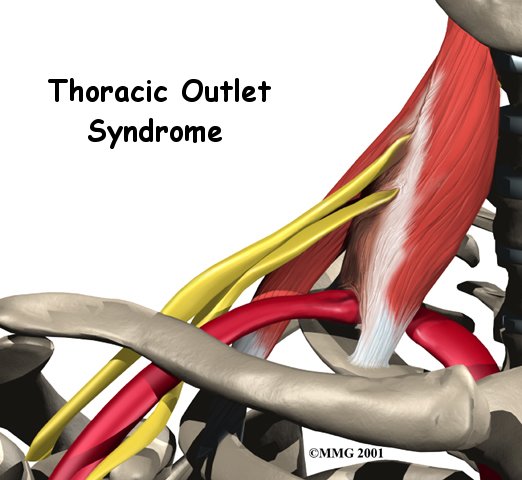


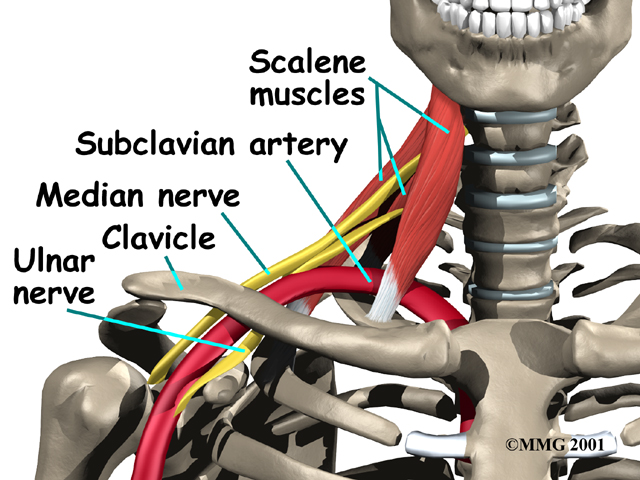
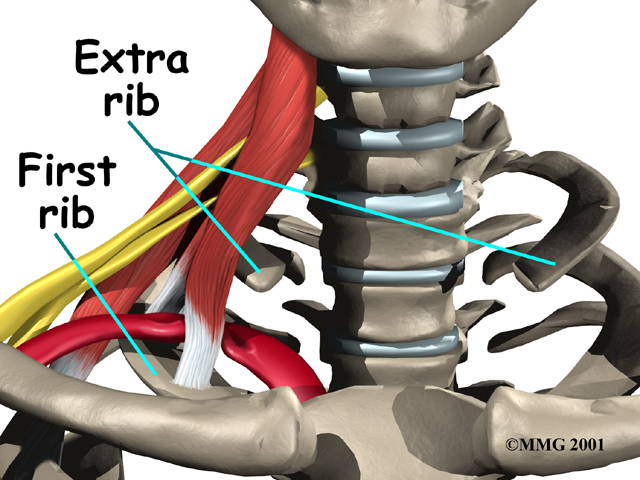 The main cause of TOS is that the nerves and blood vessels going to the arm and hand get squeezed near the thoracic outlet. This can occur for many reasons.
The main cause of TOS is that the nerves and blood vessels going to the arm and hand get squeezed near the thoracic outlet. This can occur for many reasons.